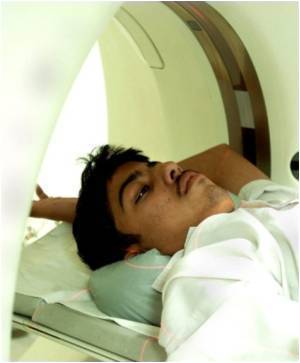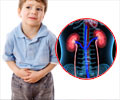A new poll has found that more than eight in 10 Ontarians say they would want to be taken directly to a trauma centre if they were seriously injured

Neither event is guaranteed, said Dr. Avery Nathens, the hospital's trauma director.
Nearly two-thirds (62 per cent) of seriously injured adults in Ontario are taken to their nearest hospital first and most (69 per cent) are never transferred to a trauma centre.
Previous research by Dr. Nathens found that going directly to a trauma centre, even if it means bypassing a closer hospital, results in a nearly 25 per cent lower death rate, cost savings and improved quality of life among those who survive their injuries.
Getting to a trauma centre within that "golden hour" when treatment might make the difference between life and death is possible in major cities, Dr. Nathens said. But it's impossible in other parts of Ontario because of our vast geography. For these patients, the mean time between being injured and getting to a trauma centre in Ontario is almost six hours.
Dr. Nathens said the purpose of the poll was to promote public awareness of the value of trauma centre care. Once informed of the benefits, survey respondents rated the importance of timely access to trauma centres above that of access to elective surgical procedures, which are closely monitored in Ontario.
Advertisement
A trauma centre is a hospital with a trauma team that includes specially trained personnel available 24 hours a day, every day, to provide immediate treatment for the most critically injured patients. Higher levels of trauma centres also have the staff and highly sophisticated medical diagnostic equipment to provide specialized emergency care such as neurosurgery and orthopedics. Some, including St. Michael's, have a helipad for receiving patients who need to be airlifted to the hospital.
Advertisement
However, Dr. Nathens noted that of the more than 150 acute care hospitals in Ontario, only 11 are trauma centres, two of which specialize in children. All are located in larger cities.
St. Michael's is one of two level-1 trauma centres in Toronto, which means it treats the majority of multisystem trauma patients from the southern part of the Greater Toronto Area as well as South Central Ontario and treats the most complicated trauma cases from throughout the province.
After they had been informed of the definition of a trauma centre, only 42 per cent of those polled said their closest hospital was one. After receiving the information, 98 per cent said it would be important for them or their relatives to be treated at a trauma centre for serious or life-threatening injuries.
"This is not just about patient preferences," Dr. Nathens said. "It is about patient needs. Reaching a trauma centre first and fast will save lives. The trauma teams and resources are here, but they need to be better utilized. Lives depend upon it."
The leading causes of trauma are motor vehicle accidents, falls and assaults. Sixty-two per cent of those polled correctly identified car crashes at the leading cause of injury-related deaths.
The poll results were released just before the August long weekend, when Ontario Provincial Police ramp up traffic patrols and increase enforcement in an effort to prevent fatalities. Five people died in traffic accidents in the province during the 2010 Civic Holiday weekend.
Colleen Carter understands all too well the importance of trauma centres and getting to them quickly. Her 21-year-old daughter Melanie died in 2007 after the car she was driving went onto the shoulder of the road and hit a parked steamroller. She was taken to a local hospital in critical condition, but the air ambulance couldn't operate because of the weather and it took 2-1/2 hours to find an ambulance and crew to drive her to St. Michael's, where she died.
"They said timing was of the essence and it was too late by the time we got to Toronto," said Carter, whose family founded Safe and Sober Canada to educate young adults about impaired driving and safety issues. www.safeandsobercanada.com.
Source-Eurekalert










